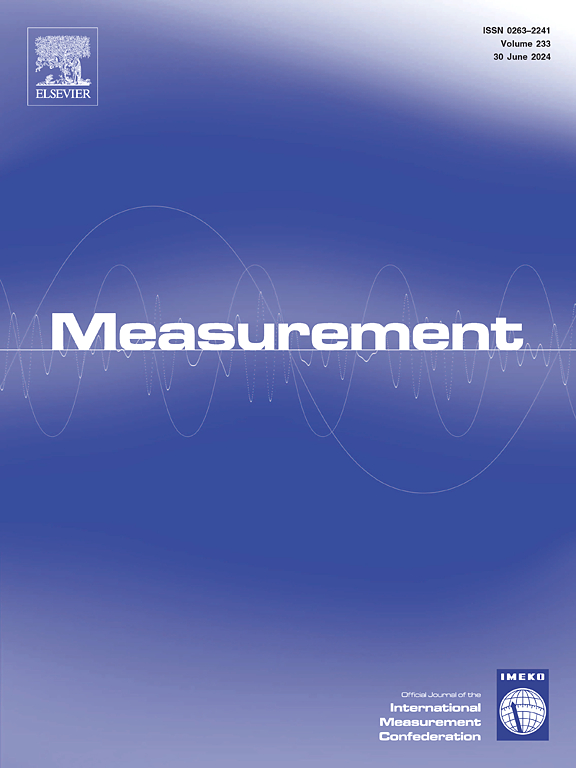基于优化 TT 型谐振器的毫升级低气耗 PAS 传感器,用于检测 CH4/C2H2 两种气体
IF 5.6
2区 工程技术
Q1 ENGINEERING, MULTIDISCIPLINARY
引用次数: 0
摘要
光声(PA)电池的微型化是光声光谱(PAS)痕量气体检测领域节省样品消耗的一个重要而实用的方向。本研究开发了一种耗气量仅为 1.1 mL 的 CH4/C2H2 PAS 传感器,用于变压器油诊断。提出并优化了一种新型 TT 型谐振器,用于设计 PA 单元,该单元具有易于集成、气体消耗量低、差分检测和光声增强等特点。TT 型谐振器的特殊设计使我们可以将传声器安装在声场的谐振中心,从而避免了传统亥姆霍兹电池在插入传声器时的探测损耗。根据实验结果,在 0-5000 ppm 的全浓度范围内,CH4 和 C2H2 的线性度 R2 均优于 0.999。经评估,CH4 和 C2H2 的噪声等效灵敏度分别为 0.25 ppm 和 77 ppb。此外,本研究还分析了 TT 型谐振器的噪声源、气体交换效率和改进潜力。本文章由计算机程序翻译,如有差异,请以英文原文为准。
mL-level low gas consumption PAS sensor for dual gases CH4/C2H2 detection based on an optimized TT-type resonator
The miniaturization of photoacoustic (PA) cell is an important and practical direction for the area of photoacoustic spectroscopy (PAS) trace gas detection to save sample consumption. In this study, a CH4/C2H2 PAS sensor with gas consumption of only 1.1 mL is developed for the purpose of transformer oil diagnosis. A new TT-type resonator is proposed and optimized to design the PA cell with characteristics of easy integration, low gas consumption, differential detection, and photoacoustic enhancement. The special design of TT-type resonator allows us to install the microphones at the resonant center of the acoustic field, which avoids the probing loss when inserting the microphones as in conventional Helmholtz cell. Based on the experimental results, a good linearity of R2 better than 0.999 is achieved for both CH4 and C2H2 in a full concentration range of 0–5000 ppm. The noise equivalent sensitivity is evaluated to be 0.25 ppm and 77 ppb for CH4 and C2H2 respectively. In addition, the noise source, gas exchanging efficiency and improvement potential of the TT-type resonator are also analyzed in this study.
求助全文
通过发布文献求助,成功后即可免费获取论文全文。
去求助
来源期刊

Measurement
工程技术-工程:综合
CiteScore
10.20
自引率
12.50%
发文量
1589
审稿时长
12.1 months
期刊介绍:
Contributions are invited on novel achievements in all fields of measurement and instrumentation science and technology. Authors are encouraged to submit novel material, whose ultimate goal is an advancement in the state of the art of: measurement and metrology fundamentals, sensors, measurement instruments, measurement and estimation techniques, measurement data processing and fusion algorithms, evaluation procedures and methodologies for plants and industrial processes, performance analysis of systems, processes and algorithms, mathematical models for measurement-oriented purposes, distributed measurement systems in a connected world.
 求助内容:
求助内容: 应助结果提醒方式:
应助结果提醒方式:


